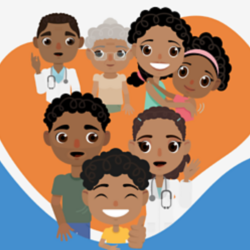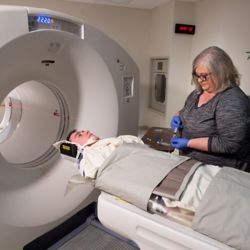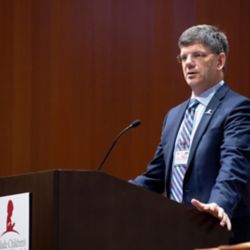Spotlight on Childhood Cancer Research
Recent discoveries shed light on leukemias, lymphomas, and brain tumors.
Childhood Cancer Awareness Month is a time to honor patients and families affected by pediatric cancer. It is also a time to highlight ongoing research to improve cure rates. In labs and clinics around the world, scientists are working to find faster, better treatments for childhood cancer. Below are a few examples of recent research by scientists that may help childhood cancer patients.

Proton therapy, which delivers energy directly to brain tumors, may become the new standard treatment for some children with craniopharyngioma.
Craniopharyngioma is a rare type of brain tumor. It is benign (not cancerous). But as it grows, the tumor can injure the brain and affect body functions. Doctors may use surgery and radiation therapy to treat it.
After radiation, patients may have issues with their memory, problem-solving ability, ability to complete tasks, or their self-control. These problems are called cognitive late effects.
Conventional radiation uses x-ray beams to kill tumor cells. But as the x-ray beam passes through the tumor, it can damage and kill healthy cells nearby.
Another kind of radiation, called proton therapy, uses a different beam. Proton therapy goes directly to the tumor and stops there, sparing nearby healthy cells. This kind of radiation might reduce side effects.
To test this idea, St. Jude scientists compared the survival and function of children treated with x-ray beams or proton therapy.
Both groups had similar survival rates (90%). But patients given proton therapy did better on IQ tests and could handle common life skills better than those who got x-ray beams.
This discovery could change how craniopharyngioma is treated and help patients function better after treatment.
Improving T cell therapy for AML
Research using the body’s own immune cells may open the door for promising new treatments.
Acute myeloid leukemia (AML) is a cancer of the blood cells and bone marrow. It can be hard to treat, especially if it comes back (relapse). St. Jude scientists looked for new ways to make immune cells stronger fighters against AML. They focused on T cells, which are immune cells that fight cancer.
The scientists changed T cells in the lab, so they became super warrior ENG T cells. These cells make antibodies and alert other T cells when leukemia is present. It is like guiding missiles to their targets. When the T cells come near leukemia cells, they immediately recognize them and attack.
But like any strong fighter, ENG T cells can become exhausted; similar to a car battery running out of power when the lights are on too long. When that happens, cancer resists treatment.
To overcome this problem, the scientists added a drug that switches them on and off and reduces exhaustion. This change helped ENG T cells stay powerful and kill leukemia better.
Hope for babies with rare ALL and AML subtypes
Recent discoveries may shed new light on why some childhood leukemias resist treatment.
Children with acute lymphoblastic leukemia (ALL) or acute myeloid leukemia (AML) may have changes to a gene called KMT2A, which makes this cancer resist treatment. St. Jude scientists hope to improve infant survival for this type of leukemia.
Using cells with KMT2A changes, they studied the cell’s response to a novel BET inhibitor. This is a kind of drug used to treat cancer. Scientists made 2 important discoveries.
Cells that resisted treatment also had changes to another gene called SPOP. And scientists also identified another gene that affected how well the drug worked.
Knowing what caused resistance and what affected the drug, the scientists added in 2 new medicines that helped overcome resistance and made the drug work better. This treatment slowed the growth of resistant cancer cells without obvious damage to normal cells in mouse models mimicking human leukemia.
This way of treating cancer might improve survival in patients with fewer side effects. Scientists are planning more studies using this treatment.
Why Hodgkin lymphoma runs in families
St. Jude scientists may have found why Hodgkin lymphoma (HL) is sometimes passed down (inherited) in some families.
They studied families where more than 1 family member had HL. The scientists collected genetic material using blood samples from 234 members of 36 families.
The researchers performed genetic testing on family members’ cells from the blood samples. The scientists studied genetic changes and family member connections. They found 44 changes that increased the risk of developing HL. Of these, 5 had never been found before.
This research helps doctors identify families who might develop HL. But inherited HL is rare. There is currently no need to screen relatives of people who develop HL. The method scientists developed could be used for other inherited diseases too. This could help health care providers watch affected families for disease and treat it earlier.
Action steps for surviving and thriving after cancer
A recent study highlights the value of leading a healthy lifestyle for cancer survivors. The Childhood Cancer Survivor Study (CCSS) looked at the lifestyle habits of adults who had cancer when they were children.
Cancer survivors who led healthy lifestyles improved their long-term survival by as much as 20% compared to those who did not. This includes positive steps such as maintaining a healthy weight, drinking only moderate amounts of alcohol, not smoking, and exercising at the level recommended by the Centers for Disease Control and Prevention.
Major risk factors for shortened lifespan among survivors included heart disease, high blood pressure, and diabetes, all of which are seen in the general population.
Taking good care of their health after treatment is an important job for childhood cancer survivors and can help them extend their lifespan. Many resources are available to help them lead healthy lives, including those in the Healthy Living section of the Together by St. Jude online resource.
Learn more about this CCSS study.
These are just a few of the many research studies taking place around the world to improve treatment and survival for childhood and adolescent cancer patients and survivors. Scientists are working day and night to uncover new insights. Together, we have reason to hope for a brighter and healthier future for all.





